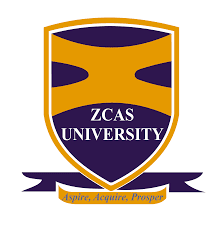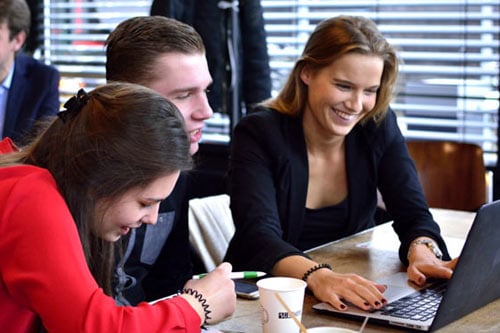"The simulations are not there as a standalone activity—we do it because we know you can create a coherent program with simulations at the center of it."
– Dr. Peter Wollstonecraft, Liverpool John Moores University
Many business schools use simulations as isolated activities in individual modules. At Liverpool John Moores University, Dr. Peter Wollstonecraft took a fundamentally different approach. Embedding simulations as a strategic strand running from the foundation year through the master's level.
His transformation shows how institutions can move beyond fragmented learning experiences to create coherent student journeys that develop both knowledge and employability skills.
Five Strategic Questions That Shaped Implementation
When Liverpool Business School decided to deploy simulations across their programs, Dr. Wollstonecraft and his team asked five critical questions:
Why are we using simulations? The answer: to create coherent programs with simulations at the center, not as bolt-on activities.
How can we give students experiences they haven't had? Many local Liverpool students needed exposure to business contexts beyond their immediate environment.
How do we ensure positive graduate outcomes? Students needed to apply theoretical knowledge and demonstrate practical experience to employers.
What skills do students need? Moving from passive A-level learning to active, student-centered university education.
How does this enhance the overall student experience? Creating engagement through complexity, competition, and meaningful reflection.
Learn how strategic deployment transforms learning outcomes:
Creating Coherence Across Academic Levels
Rather than random simulation placement, Liverpool developed purposeful progression. Foundation and level four students engage with general business principles and basic concepts. By level five and six, students tackle specific focus areas aligned with their specializations.
The key breakthrough came from ensuring module leaders communicate with each other. Without coordination, students might encounter the same simulation twice or face gaps in their learning progression.
Dr. Wollstonecraft highlights that institutions must build the confidence to let students take ownership of their learning. Faculty are encouraged to provide support while empowering students to find the answers themselves. This shift requires institutional backing for educators who move from being the “sage on the stage” to the “guide on the side.”
Assessment as Learning Journey, Not Hurdle
Traditional assessment creates what Dr. Wollstonecraft calls "a series of hurdles to jump." Students focus on passing individual assessments rather than integrated learning. Liverpool's simulation-centered approach makes assessment part of the entire learning experience from week one through week twelve.
This transformation addresses a sobering reality: only about one-third of level four students actually read their assessment feedback. When assessment becomes embedded in ongoing simulation experiences, students engage continuously rather than last-minute studying for isolated tests.
The approach reduces students’ fear of failure by emphasizing reflection. Wollstonecraft highlights that finishing last or making mistakes becomes a powerful learning opportunity, preparing students for the realities of business and paving the way for more resilient assessment strategies.
Ready to transform your assessment strategy?
Institutional Culture Change Required
This strategic approach requires more than individual faculty adoption. It demands institutional commitment. Liverpool's leadership team made a conscious decision to empower academics to innovate while removing barriers to experimentation.
"We ask academics to have the confidence to try things, and if it all goes horribly wrong, we can all learn from that so the next person won't make the same mistakes," explains Dr. Wollstonecraft.
The approach extends beyond simulations to embrace emerging technologies like AI and VR, recognizing that employers expect graduates to lead with these tools rather than fear them.
Real-World Preparation That Employers Value
Liverpool's graduates enter the job market with concrete experiences they can reference in interviews. Rather than theoretical knowledge alone, they can discuss specific decisions made under pressure, team collaboration challenges overcome, and strategic thinking applied in competitive contexts.
The school now uses simulation experiences in recruitment materials, showcasing the practical learning approach to prospective students who increasingly seek university experiences beyond traditional lectures.
Results That Validate the Strategy
Modules using simulations show significantly improved evaluation scores, driven by enhanced student engagement and satisfaction. Students consistently mention simulations positively in feedback, particularly when faculty explain the purpose and learning objectives clearly.
The strategic strand creates consistency across international partnerships as well, ensuring collaborative students worldwide receive equivalent learning experiences while allowing for individual customization within that framework.
Liverpool Business School's transformation demonstrates that simulations work best not as isolated tools but as strategic infrastructure supporting coherent, progressive learning journeys that prepare students for modern professional challenges.
Key Takeaways: Strategic simulation deployment requires institutional commitment and faculty coordination, assessment should be embedded in learning rather than treated as a separate hurdle, and coherent progression across academic levels maximizes both engagement and employability outcomes.


.png?length=300&name=unnamed%20(11).png)
.png?length=300&name=unnamed%20(7).png)
.png?length=300&name=unnamed%20(8).png)
.png?length=300&name=unnamed%20(6).png)

.png?length=300&name=unnamed%20(10).png)
.png?length=300&name=unnamed%20(5).png)
.png?length=300&name=unnamed%20(9).png)
.png?length=300&name=unnamed%20(4).png)
.png?length=300&name=unnamed%20(2).png)
.png?length=300&name=unnamed%20(1).png)
.png?length=300&name=unnamed%20(3).png)
.jpg?length=300&name=unnamed%20(2).jpg)





.png?length=300&name=loughborough-university-logo%20(small).png)





